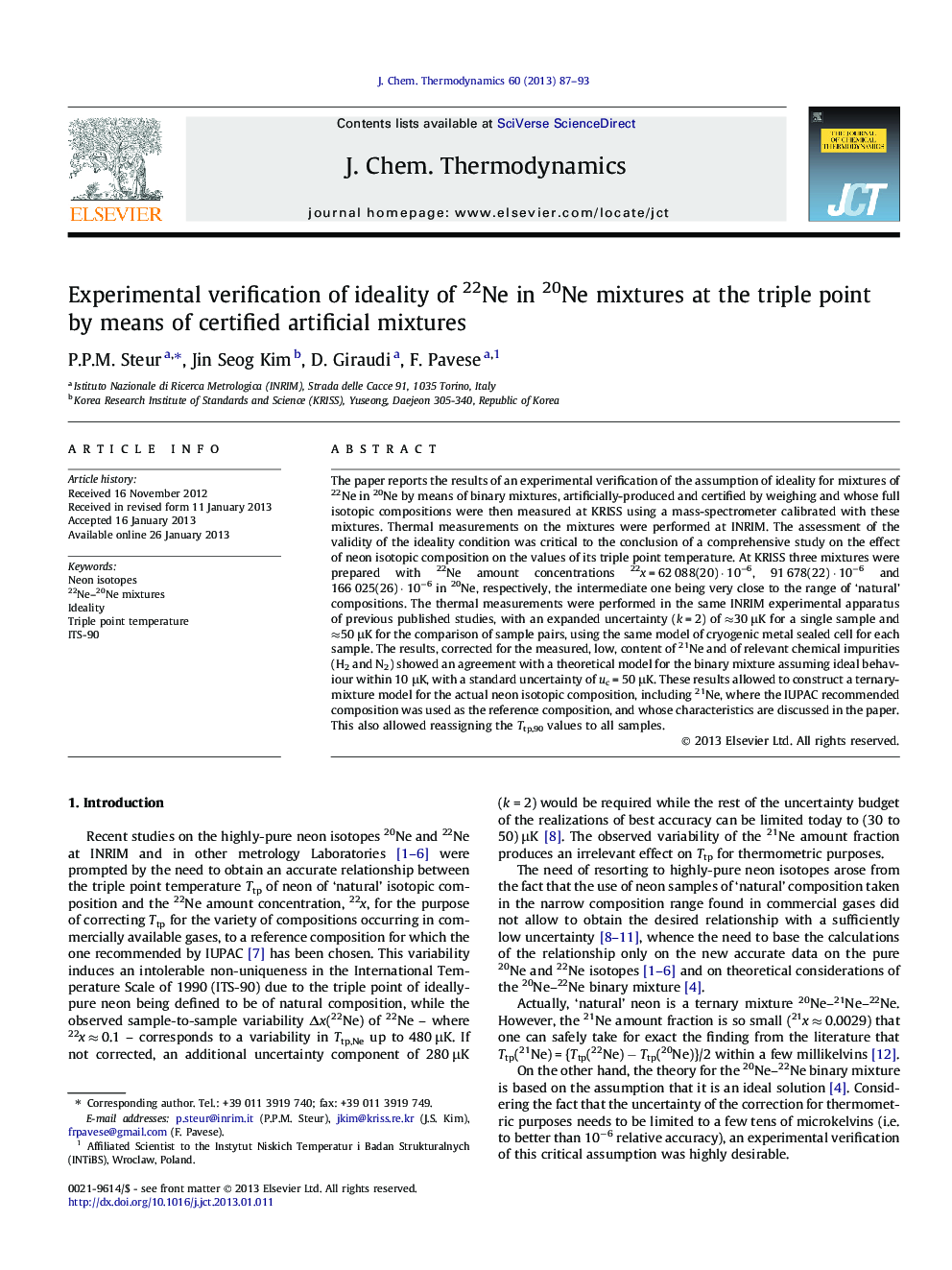| Article ID | Journal | Published Year | Pages | File Type |
|---|---|---|---|---|
| 216110 | The Journal of Chemical Thermodynamics | 2013 | 7 Pages |
The paper reports the results of an experimental verification of the assumption of ideality for mixtures of 22Ne in 20Ne by means of binary mixtures, artificially-produced and certified by weighing and whose full isotopic compositions were then measured at KRISS using a mass-spectrometer calibrated with these mixtures. Thermal measurements on the mixtures were performed at INRIM. The assessment of the validity of the ideality condition was critical to the conclusion of a comprehensive study on the effect of neon isotopic composition on the values of its triple point temperature. At KRISS three mixtures were prepared with 22Ne amount concentrations 22x = 62 088(20) · 10−6, 91 678(22) · 10−6 and 166 025(26) · 10−6 in 20Ne, respectively, the intermediate one being very close to the range of ‘natural’ compositions. The thermal measurements were performed in the same INRIM experimental apparatus of previous published studies, with an expanded uncertainty (k = 2) of ≈30 μK for a single sample and ≈50 μK for the comparison of sample pairs, using the same model of cryogenic metal sealed cell for each sample. The results, corrected for the measured, low, content of 21Ne and of relevant chemical impurities (H2 and N2) showed an agreement with a theoretical model for the binary mixture assuming ideal behaviour within 10 μK, with a standard uncertainty of uc = 50 μK. These results allowed to construct a ternary-mixture model for the actual neon isotopic composition, including 21Ne, where the IUPAC recommended composition was used as the reference composition, and whose characteristics are discussed in the paper. This also allowed reassigning the Ttp,90 values to all samples.
► Production of gravimetrically prepared artificial mixtures of 22Ne in 20Ne at KRISS. ► Experimental verification at INRIM of a theoretical model up to 22Ne/Ne = 0.16. ► Full description of T(20x; 21x; 22x) over the composition range of natural neon.
